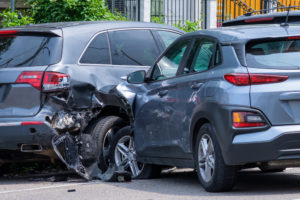Roundabouts are circular intersections designed to control traffic flow and speed without stoplights or stop signs. Statistically, roundabouts are safer for drivers and pedestrians than traditional intersections. They reduce the number of places a vehicle can strike another vehicle, and they eliminate the left turn against oncoming traffic – the most common cause of intersection accidents. Roundabouts also eliminate the prospect of a driver running a red light or speeding up to get through the intersection to beat the light. If an accident does occur, it is at a much lower speed than at a traditional intersection and it is much less likely to be fatal.
However, there is a consistent problem with roundabouts – many drivers have, absolutely, no idea how to use them. If you have ever driven in a roundabout, you may have experienced some erratic driving. Even experienced drivers don’t seem to understand who has the right-of-way and who must yield. In most traffic situations, drivers must yield to the right, but in a roundabout, it is the opposite; traffic entering the circle must yield to the left giving the right-of-way to drivers who already entered the circle.
There are two types of roundabouts – single lane and multi-lane. The multi-lane roundabouts tend to be the most confusing for drivers. Here are a few tips for entering and driving in any roundabout:
· Slow down to 15 mph before you enter the roundabout.
· Yield to the drivers already in the roundabout (coming from the left).
· Watch for pedestrians in the crosswalks.
· Once you see a sufficient gap in traffic, you may cautiously enter the circle and proceed to your desired exit. If there is no traffic in the roundabout, you may enter without yielding.
· Don’t switch lanes once you are in the roundabout.
· Don’t stop in the roundabout to allow another vehicle to enter; you have the right-of-way.
· Continue toward the roundabout and look to your left as you approach the yield sign at the entrance to the roundabout. Yield to traffic already in the roundabout.
· Don’t try to overtake someone in the roundabout. If you are in the outside lane, assume that someone in the inside lane may try to exit and may cross in front of you.
· Look for pedestrians and use your turn signal before you exit, and make sure to stay in your lane as you navigate the roundabout.
Driving is a dangerous activity on any roadway. The fact that a roundabout feels more dangerous to you might be a good thing, as it may increase your awareness for safety and defensive driving. If you are apprehensive about driving in a roundabout, try driving through it during slow traffic times. Even if you feel a secure in your driving skills on a roundabout, pay attention, because one split second of distraction or lack of awareness can result in an accident. And, please…be careful out there.
Mark Bello has thirty-three years experience as a trial lawyer and twelve years as an underwriter and situational analyst in the lawsuit funding industry. He is the owner and founder of Lawsuit Financial Corporation which helps provide cash flow solutions and consulting when necessities of life funding is needed during litigation. Bello is a Justice Pac member of the American Association for Justice, Sustaining and Justice Pac member of the Michigan Association for Justice, Business Associate of the Florida, Tennessee, and Colorado Associations for Justice, a member of the American Bar Association, the State Bar of Michigan and the Injury Board.
@thumbnail.jpg)
Experienced attorney, lawsuit funding expert, certified civil mediator, and award-winning author of the Zachary Blake Legal Thriller Series. The series features super-trial lawyer Zachary Blake handling "ripped from the headlines" legal and political issues of the day. The series currently consists of Betrayal of Faith, Betrayal of Justice, Betrayal in Blue, Betrayal in Black, and Betrayal High, with a sixth Zachary Blake novel due out later this year. To learn more about these topical social justice legal thrillers. please visit markmbello.com. Mark is a member of the State Bar of Michigan, a sustaining member of the Michigan Association for Justice, and a member of the American Association for Justice.













2 Comments
Mike Bryant
We are seeing more and more of these in Minnesota. It is interesting to hear how many people avoid them, actually taking longer routes. They seem to work well in the long run, but still very new. There is a concern that drivers education isn't covering them as of yet. Hopefully, that will change.
Scott Batson
The statement that the yield to the left is new is not accurate. Say you're on a two-way street going north and approaching a two-lane, one-way street that is going east and your street ends at the one-way (T intersection). The one way street is higher order, so you yield to the vehicle approaching from the left (hopefully stop). A roundabout is a series of T intersections where the entering traffic on a two-way street intersects the one-way through street.
Comments for this article are closed.